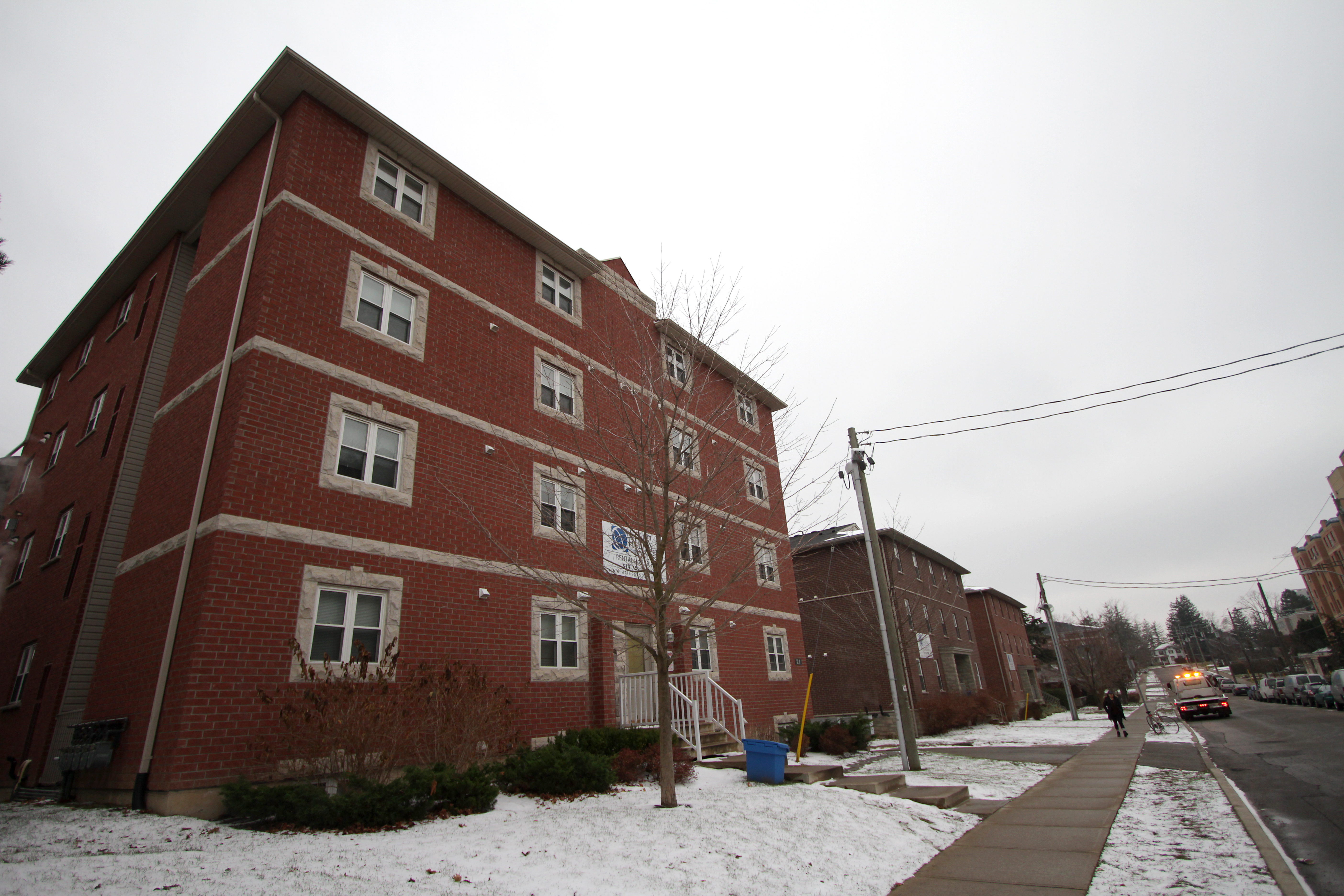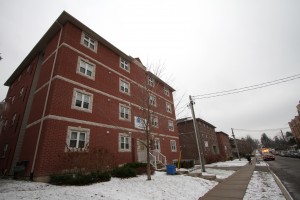Changing housing trends

Gone are the days of traditional student homes in Waterloo, as high-rise
apartments become the norm for Laurier and University of Waterloo students

The area of Waterloo surrounding Wilfrid Laurier University and the University of Waterloo has been witnessing a boom in student housing development growth through the past few years. Trends in the local student housing market have been switching from more traditional five- or more-bedroom units and residential houses to larger high-rise buildings with fewer bedrooms.
“There’s been a lot of student housing going in around Laurier in the past few years, and there should be more,” said Erica McLerie, a senior market analyst at the Canadian Mortgage and Housing Corporation.
According to CMHC’s data, in the university area alone there are currently 503 apartment-style residences, both student and private, that are under construction.
The data also shows that the university area, relative to other parts of the city, has the highest availability and vacancy rates concerning housing units, whilst having the least amount of total housing units.
This area also has the highest median rent relative to the remainder of the city. Although this rent rate is increasing at roughly the same rate as other areas, the rent still remains higher than other parts of the city.
“The baby-boomer generation has probably been the richest generation, so there may be more money available for students to have, but I don’t think the rent for apartments has gone up that much,” said McLerie.
The changing student housing trends also reflect general trends in other areas of the province. New housing projects in Waterloo, much like that of Toronto, are largely dominated by condominium developments.
However, in Waterloo condominiums are being built by developers, sold to investors and then rented to students in the area.
“In the past decade we’ve moved from one kind of housing available in the city, to many different kinds of housing available,” said Jeff Henry, City of Waterloo councillor for Ward 6, which includes both universities. “This means more townhouse units being built and more one- and two-bedroom units being built. I think that’s the market responding to where the demand is.”
Waterloo is not alone is this new trend of building larger, high-rise condominium buildings and renting them to students.
Guelph, also housing a large university community, is currently seeing high-rise growth that mirrors that of Waterloo.
Important to mention is that it is not only the physical size of the buildings that has changed, but also the amount of bedrooms in each apartment.
Traditionally, student housing entails a unit with five bedrooms, suitable to host a larger amount of people than what traditional private residential apartment units would.
However, student housing developments are now being modeled after this traditional one- to three-bedroom unit.
“There’s some newer large buildings that are expected to go in, and they are condos that are going to be sold to investors and rented to students,” said McLerie.
“I’m seeing that some of the newer buildings are basically one, two or three bedrooms. So more like the private rental market, but still rented to students.”
This new trend in Waterloo’s residential apartment developments in part responds to changing market demand from many students in the area.
“The main reason I chose an apartment over a house is there’s just less maintenance. The apartment is cleaner and you don’t have to clean up the front lawn or take out the garbage,” said Adam Gilbert, a second-year student at Laurier.
However, residential apartment buildings built in the traditional private model with fewer bedrooms, may also have a greater ability to cope with a long-term demographic change.
“In a traditional residential apartment, they can rent to anybody, so if in the next few years if the student population shrinks, they would be able to rent their units to maybe professors, or some of the high tech workers in the area,” said McLerie.

